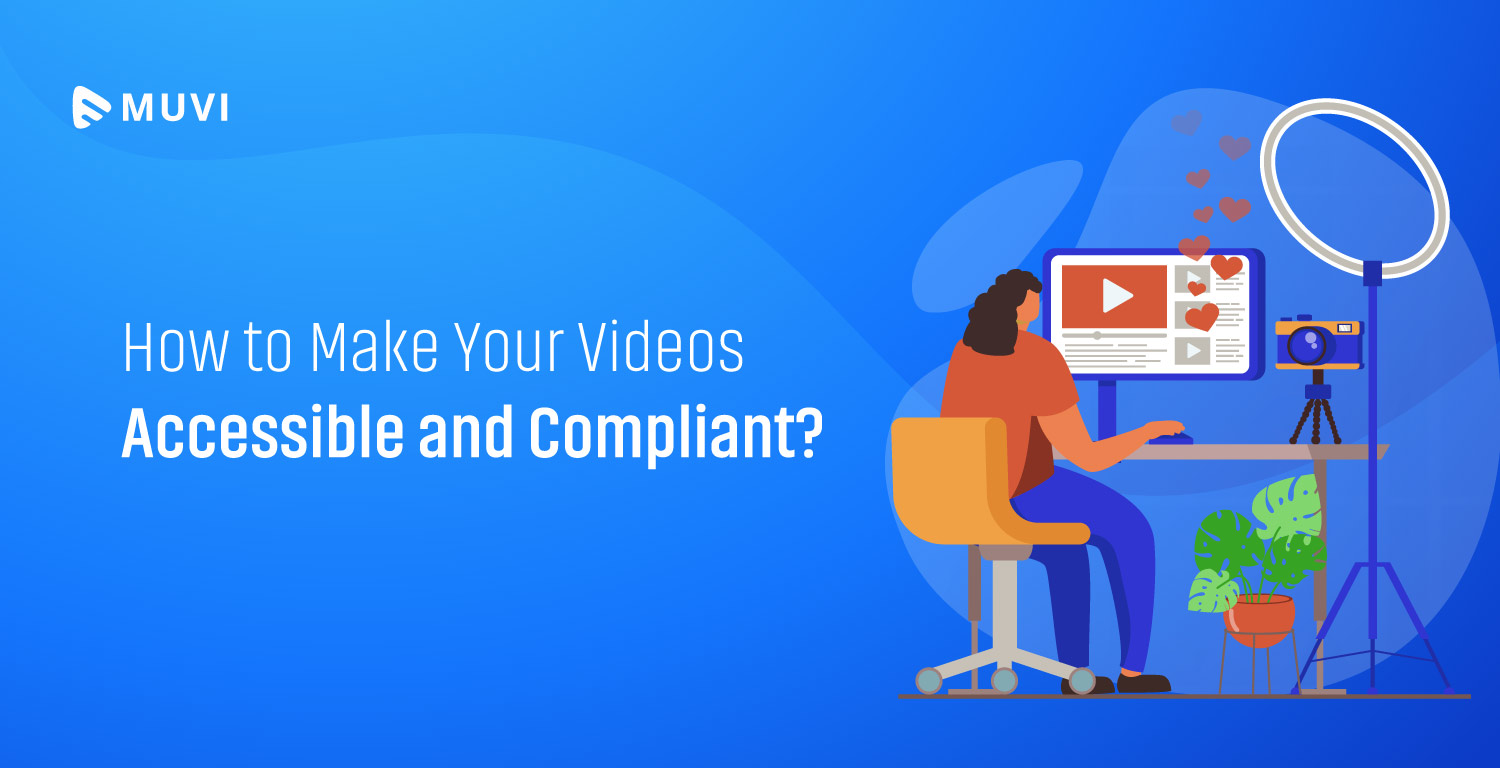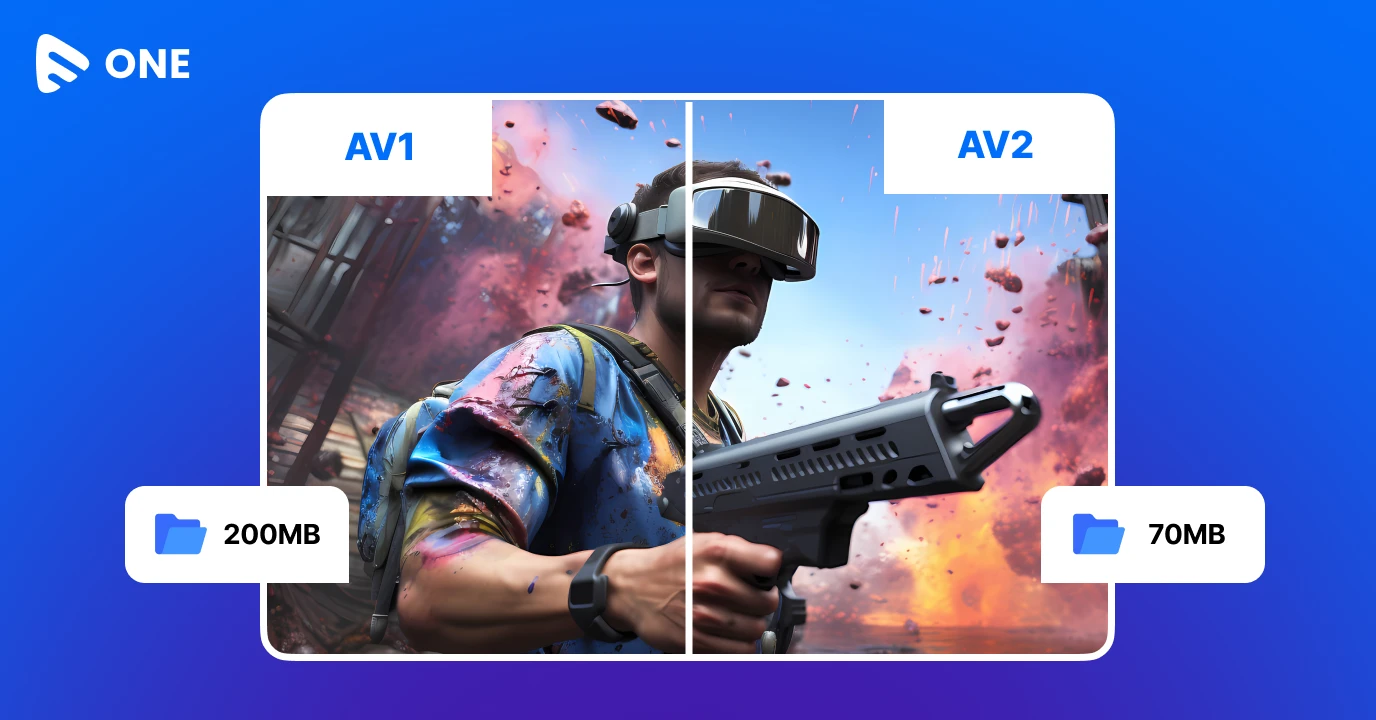No market is a small market and every click, view and impression counts. Going by this, it is imperative to take into consideration that set of the population which are in some or the other way not able to access and use VoD service. With the spike in demand and engagement of VoD content, producing and marketing the content just for the masses is not enough. One needs to take care of the accessibility and compliance part of the videos as well.
Statistics say that 96% of the consumers increased their online video consumption in 2020, with viewers spending 100 minutes per day on average in 2022. On one hand it signifies the widening scope of growing your streaming/VoD business, but on the other, it implies that your videos have to be more versatile in terms of accessibility by the large audience base including the ones with disabilities.
Accessibility and compliance go hand-in-hand and no doubt that this often remains one of the least explored areas, especially if you have just started your streaming business or are going to start. In this blog, we are going to discuss how to make your videos on demand accessible and compliant.
What is the Meaning of VoD Accessibility and Compliance?
Video accessibility in itself refers to the ability of a viewer with some kind of disability to access, understand or use an online video. The aim to make VoDs accessible is to make them easily comprehensible to serve its purpose to the people with disabilities such as vision or hearing impairment, mobility disability, cognitive conditions, and others.
VoD accessibility compliance is a set of rules, laws, guidelines or standards that help your VoDs meet the criteria to become equally accessible to the people with disabilities. Some of such guidelines are-
The Americans with Disabilities Act (ADA)
According to the ADA act, the discrimination against people with disabilities is prohibited in several areas- starting from transportation to communication, entertainment etc. Under ADA, the disabilities cover mental disabilities as well as physical disabilities including hearing or vision impairments. It can be considered as a violation of ADA if your content discourages the people with disability to access, view, or use it like the other audience and viewers.
The rehabilitation act of 1973 prohibits the discrimination in the programs conducted by federal agencies, in programs receiving federal financial assistance, in federal employment and employment practices of federal contractors.
508 compliance is a federal law meant to ensure that all the media and websites of different types must be safe and accessible to the people with disabilities.
Guide to Make Your Videos Accessible and Compliant
It’s clear that video accessibility and compliance are interlinked and now we will get to know how to achieve those for each of your VoD content so that there are no constraints for your viewers who have some kind of disabilities. There are different compliance acts and rules for VoDs, but the good news is you don’t need to go through each of them separately if you implement the following things-
Closed captions (CC) are quite common in diverse VoD content including TV shows, movies, web series, and others. Closed captions are basically a text version of the spoken part of any video that are shown on any visual display like television screen, computer or laptop screen, mobile & tab screens etc. While closed captions are mainly meant to describe the audio speech part to the viewers with hearing impairments, they also include describing the other audio parts such as sound effects, speaker identification/description etc. for better understanding of the viewers. All the leading VoD and OTT platforms like Netflix, Amazon Prime, Hulu etc. provide closed caption options on their content.
Also Read: Creating a Video on Demand Website in 2022
Audio description, as the name suggests, is meant for audiences with visual impairments including blindness. It describes each scene, conversation, and what is happening throughout any VoD content, be it movie, webseries, or a TV show. It is a must have for your VoD content to include audio description to make it compliant to the viewers with visual disabilities.

Live captions are used to describe the audio part of any live event such as live meetings, webinars, events that are streamed live etc. Live captions are similar to closed captions except that they are applicable to the real-time events. You too can implement it in your live videos by automatic speech recognition (ASR). ASR is based on AI (Artificial Intelligence) that converts the audio data into text.
In the transcription process the audio is converted into a written document. Apparently it may look similar to closed captions, but the main drawback is there is no time frame/information and it makes it inconvenient for the VoD viewers with hearing disabilities. However, transcripts are more suitable for audio content like podcasts and others.
Sign languages, being a highly effective means of communication in the deaf community, are not only limited in their daily communication, but are being adopted to many VoD content for their understanding. Furthermore, many of the sign language broadcasting trusts and organizations are coming up with their VoD content along with sign languages.
To Conclude,
A robust and flexible platform for your VoD content streaming is what you must opt for to have and implement all these in order to make your VoDs accessible and compliant. Such a platform must support video accessibility tools to implement the above-mentioned and lets you customize them without requiring much coding or texting.
Muvi, the one of its kind of OTT platform provider, not only comes with multiple solutions to make your videos accessible and compliant but offers much more including built-in CDN, metadata management, multiple monetization models, and social media integration, to name a few. We already discussed the importance of a host of things that are needed to make your VoD successful and Muvi, as we know will stand tall on all the fronts.
Don’t go by what we say, take the 14-day free trial yourself and get started to see how the platform unwinds limitless growth opportunities for you. No, we don’t need your credit card details for the FREE TRIAL. It’s a truly no-strings-attached deal you cannot miss out on.
















Add your comment